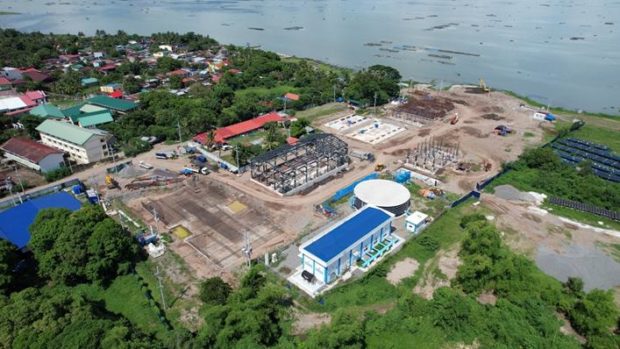
Laguna Lake East Bay Water Supply Project is an integral part of Manila Water’s Four-Water System Masterplan, and is expected to provide up to 250 MLD water supply to the towns of Rizal Province and the cities of Taguig and Pasig and municipality of Pateros in the Central Distribution System.
MANILA, Philippines — To avert any future water shortage and to meet the demand of its increasing customer base, Manila Water is embarking on a service improvement plan focused on water security and sustainability.
At present, Manila Water has a regulator-approved Four-Water System Masterplan as the company continues to support and work with MWSS for the development and implementation of short- to long-term projects to ensure sustainability of future water supply. The water source roadmap includes the Angat-La Mesa Water System, Antipolo Water System, Laguna Lake Water System and the East Sources Water System.
The Angat-La Mesa Water System includes the Umiray-Angat Transbasin Rehabilitation Project and the Sumag River Diversion Project which will further harness the Sumag River in Bgy. Sumag, General Nakar in Quezon Province while the Antipolo Water System will draw water from Wawa-Calawis in Antipolo with a combined yield of 518 million liters of water by 2025. The first phase of the Calawis project has already been completed and is now undergoing commissioning and testing.
The East Bay Water Supply Project under the Laguna Lake Water System will source water from the eastern flank of Laguna Lake even as the company has completed the Cardona Water Supply Project which gets water from the central portion of the bay.
Other projects being eyed as medium- to long-term water sources aside from harnessing Laguna Lake include the New Wawa Dam Project in Rizal Province, the Kaliwa Dam Project and the Kaliwa River Project which will harness water from Kaliwa River downstream of Quezon Province.
Furthermore, the construction of the new 15-kilometers aqueduct and 6.4- kilometer tunnel is already completed in coordination with MWSS which will provide another 1,600 million liters per day (MLD) to flow towards La Mesa Dam, optimizing the flow of excess water from Ipo to La Mesa Dam.
Manila Water also employs artificial intelligence to improve its ability to forecast water supply systems in the Angat-Ipo-La Mesa dams and its treatment plants in order to help reduce shortages.
Apart from all these water-supply augmentation projects, the company is currently strengthening its climate-change mitigation programs aligned with the United Nations Sustainable Development Goal 13 of the Paris Agreement to help further ensure water supply reliability.
“Manila Water conducts several initiatives to contribute to the reduction of greenhouse gas emissions while making our operations more efficient and addressing operations risks,” East Zone Operations Group Director Joemar Emboltorio said.
The water concessionaire is also tremendously involved in the protection and reforestation of key watersheds through its watershed management program. As of 2021, more than 1.2 million trees had been planted and maintained by Manila Water in the watersheds.
Manila Water is committed to building climate-smart and resilient infrastructure to ensure uninterrupted water supply to its increasing customers and adapt the Decarbonization Roadmap to meet Net Zero by 2050.
RELATED STORY:
Manila Water’s distribution network now stretches to 5,362 kilometers